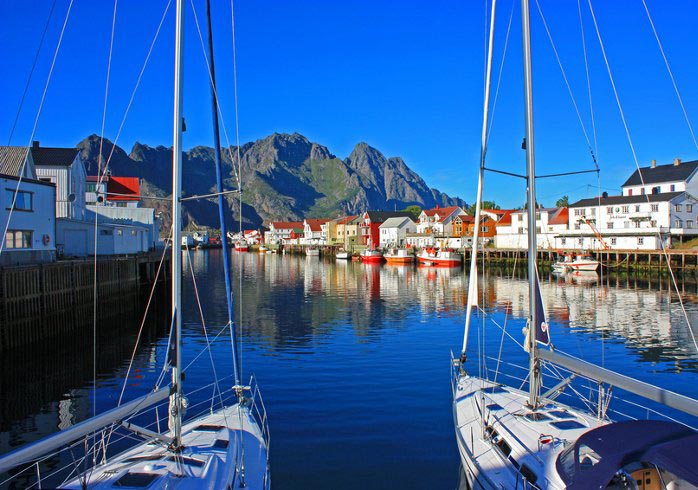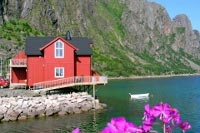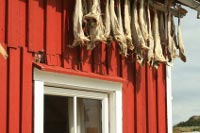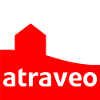
A paradise not only for anglers
The archipelago of Lofoten with around 80 smaller and larger islands is particularly a popular holiday destination for anglers as this region has a thousand year tradition of fishing and extensive fishing grounds. But the Lofoten have much more to offer guests than just fish. Take in the unique magical light and colour formations of these Norwegian islands which have provided inspiration to many artists and photographers.
The Lofoten offer an incredible and unique nature as well as friendly inhabitants. The archipelago lies towards the northern polar circle and thanks to the Gulf Stream has a moderate climate throughout the year. The coldest month is February with an average of -1°C and July with an average temperature of 12°C the warmest month.
Rorbuer and grass roof houses
Those who plan a vacation on the Lofoten are confronted with the question where and how they want to stay overnight. Most of the houses have been built with wood, which are mainly grass roof houses or former fishing huts (also known as Rorbuer), and today are rented out to vacationers. They have the advantage of being next to the water as the houses have usually been built on stilts. Therefore one is just a couple of steps away from the water which does not only delight anglers.

Rorbu
In addition to this, one is much closer to the historical fishing villages. Here you will soon see that fishing still remains a focal point of everyday life.
It is recommended to live on one of the six main islands as all are connected with each other by roads. This saves considerable time that else would be wasted with long ferry journeys. Ideal starting points for discovering the Lofoten are Ballstad, Stamsund, Nusfjord, Sørvågen and Henningsvær as they are centrally located.
The magical colours and light
Guests who end up spending a vacation on these islands will enjoy an intensive nature experience. Experience the unimaginable colour intensity of the landscape, turquoise sea as well as white sandy beaches. The special light on the islands radiate something magical. It is therefore not surprising that many artists reside here in order to be inspired by the lighting colours. From the end of May to mid July you are able to enjoy and take in the midnight sun that never sets. In the winter months the polar light, aurora borealis, will enchant with its array of colours in the night sky.

Polar light
The best way of discovering the islands is by bike or foot with the best travel period being in the summer months of June to August due to average higher temperatures within this period. On all larger islands there are designated hike routes that take you through untouched nature. A particular highlight is a trip to the bird rock on the island Røst and surrounding smaller islands on the southern tip of the archipelago. While on Røst it is worth taking a detour to the lighthouse Skomvær.
Vesterålen at the northern end of the Lofoten are an excellent starting point for whale watching expeditions. The trips start from Stø and Andenes between the period of mid May to mid September and due to the high demand it is recommended to make a reservation in advance. At high sea you will be able to see these impressive giants of the sea: Huge sperm whales, humpback whales, minke whales, orcas and dolphins.
Information for anglers
In Norway one must have a fishing licence which is available in every post office and valid for a year. Anglers who are seeking to pursue their passion on the Lofoten should rent a Rorbu. Often one is able to fish for the next meal from the property’s terrace or living room. There is an array of fish that can be caught in this region which include cod, coalfish, halibut and redfish. From cod the famous dried cod is made of that must dry on wood frames (without adding any salt) at least for two months before consumption. Then you can enjoy this popular delicacy.
On atraveo you can find lots of rorbuer which are ideally equipped for your favourite sport: Many have a (motor) boat and freezing facilities.
Tips for arrival

Stockfish
Due to the location up towards the north it makes sense to fly with the plane. It is advised to plan the trip in advance in order to get hold of cheap flights and select the desired holiday accommodation. Norwegian flies from many European airports to Harstad/Narvik-Evenes but in many cases one will have to change in Oslo. There are also charter flights provided by TUI Wolters. From Harstad/Narvik-Evenes the trip then continues with the rental car to the Lofoten. The travel time will be around 2 ½ hours.
If you should despite the great distance want to drive by car then you can take the ferry from North Jütland to Bergen. From here the land route will take you towards the north. You should be aware of the fact that the distance between Bergen and Lofoten is more than 1,500 kilometres and the route is mainly country roads. Therefore one should also plan in detail where you will stop on the journey upwards. In Bodø then one can take a ferry to the Lofoten which will take up to 4 hours.
Alternatively you could opt to take the traditional post ship of the Hurtigruten. These dock daily at the ports Svolvær and Stamsund and are a popular attraction with Norway holidaymakers.
